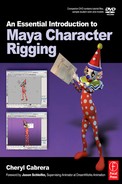It’s 3 a.m. A hard rain pounds against my office window. I sip my coffee. Hot. Bitter.
Hmm. Too bitter. I sprinkle some sugar and give it a swirl.
Perfect.
I finish downloading the latest version of Bones for 3DStudio DOS 4 and launch the application. My XT brings it up in a matter of minutes. Fast. The way I like it.
My anticipation mounts as I open the demo data. Reaching forward with the mouse, I select the character’s hand and prepare to pull.
I take another sip of coffee.
It’s good. Real good.
I begin pulling my character’s hand and the right arm extends. The elbow bends, the geometry deforms, and a slow grin spreads across my unshaven face.
This is going to be awesome.
Then, as the arm stretches further, I notice a slight tremble in the left leg. With concern, I realize that further I pull the arm, the more the leg shakes until suddenly the entire character lurches forward, His left leg shoots toward the sky as the hips twist and the head lists to the right. I shove the arm back toward the body and the hips pivot. Suddenly the left arm spasms, his legs buckle and the head continues to twist and jerk. Frantic now I pull the arm back out and the body spins 180 degrees. The right leg flips up and I swear his knees are breaking in at least three different directions. I begin to whimper, thrashing the arm back and forth, the poor character dancing like a possessed demon in its final throws of death, and with final pull I yank the mouse out of the computer, throw myself back in my chair and scream “NOOOO!!!!”
Thankfully, things have changed a lot since 1994. Software has gotten cheaper, tools have gotten better, and great instructional material like this book you hold in your hands have become available.
A well made character rig works like an extension of the animator. It does what the animator expects, when they expect it. It helps them make the right decisions, but gets out of the way when they want to power through something. It enables, instead of distracts. Easier said than done, right? How does one know what to put into an animation rig? What tools are best? What features are must-haves?
There are only two ways to really know what features are necessary in an animation rig: experience, and communication.
Communication is relatively easy. You simply ask the animator what they want. You may find the answers difficult to interpret at first, as most often the answer is “yes, but only sometimes”. This can cause more work for you, but think of it this way: let’s say it takes an animator one minute to manually match an IK arm to the position of an FK arm. You can create a button to do this task instantly, but it will take you a week to implement it. Is it worth it? If the animator would use this tool 10 times per day, that’s a 10 minute savings per day, right there. Nearly an hour per week. Expand that to 50 weeks for the year and you’ve saved a single animator about 41 hours of work. An entire week of matching FK and IK arms. Nice! If you work at a film studio and there are 45 animators, you’ve just saved the department 45 weeks of work. With an average salary of 64,000 per year, you’ve saved the studio about 55,000 dollars. That’s with only one feature that took you one week to implement! (average salary based on info from The Animation Guild: http://www.animationguild.org/)
The other method of learning what to put into a rig is through experience, and that’s where Cheryl’s book really comes in handy. The best way to get experience is to actually try and create a short film yourself. Cheryl does a fantastic job of walking you through the process from modeling, to texturing and rigging using examples from real short films by students, many of whom are now working in the feature film industry.
It’s this method of learning that I recommend the most. I’ve created a few short films in my time, and although most are so horrible that that they will never see the light of day, the amount that I learned from each was priceless.
So take Cheryl’s book. Follow the instructions. Absorb. Then pick up a few other books, maybe a DVD or two, learn as much as humanly possible, and then learn some more. Our industry is an exciting and creative one, where anything is possible as long as we can conceive of some way to do it. My challenge to you? Be one of those that makes these things not only possible, but fun.
Jason Schleifer
Supervising Animator
DreamWorks Animation
